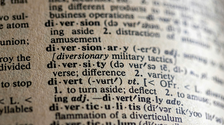Harry
Profesjonalny nauczycielHow Culture Shapes Spanish: Part 1
Languages are a bit like people—they’re always changing. Spanish is a prime example of this, full of twists and quirks that make it interesting.
Take Chilean Spanish, for instance. I lived in Chile for a while and grew up in Spain, so the difference was quite striking. Many people think of Spanish from Spain as the “official” version, but then you hear Chilean Spanish, and it’s a whole different story. It’s as if traditional Spanish has been mixed with a good dose of indigenous Mapuche influence. They use words like "guagua" for baby and "pichintún" for a little bit, which come from Mapudungun, the language of the Mapuche people. And the way they speak? It has its own rhythm, a bit like they’re following a different beat compared to what you would hear in Spain.
Moving on to Mexican Spanish, which has a strong Nahuatl influence, which is the language of the Aztecs. Words like "chocolate," "tomato," and "avocado" come from this old language. It’s like history in your mouth. The way Mexicans speak Spanish has this sing-songy vibe and is full of vibrant expressions. It’s like every conversation is a mini-story.
Spanish is more than just words. It’s a mix of histories and cultures, showing how languages shift and grow. So next time you hear Chilean or Mexican Spanish, think about how each one tells its own story from different corners of the world.
What insights have you gained about Spanish from interacting with different Spanish-speaking cultures?
Unique accents
local words vary on region and country
Different dialects
Cultural influences
zadano pytania 0
25 lip 2024 19:42
Harry
Znajomość języków
kataloński, angielski, inny, hiszpański
Język do nauczenia się
inny
Artykuły, które również mogą ci się spodobać

Top 6 Mistakes to Avoid with Vocabulary Acquisition
23 głosy poparcia · 4 Komentarze

Navigating Your First Job: Do's and Don'ts in the Workplace
44 głosy poparcia · 18 Komentarze

What Content to Watch to Acquire Advanced-level Proficiency
75 głosy poparcia · 48 Komentarze
Więcej artykułów
